“Gun companies make a big deal out of their handguns being drop safe,” RF said while puffing on a cigar (just before he quit, descending into madness). “Aren’t all modern guns drop safe? What does that mean, anyway?” The simple answer is no, not all firearms are “drop safe,” and that’s something designers have been trying to fix for centuries.
There are two ways that a firearm can discharge accidentally when dropped:
– An impact causes the sear (within the fire control mechanism) to disengage allowing the hammer or striker to fall and start the firing process — just as if someone had pressed the trigger,
– An impact on a cartridge-based firearm with a free floating firing pin causes the firing pin to move forward and strike the cartridge’s primer with sufficient force to ignite the primer.
Neither of these possibilities are desirable. But addressing the issue has taken centuries . . .
The earliest firearms had no safeties; partly because they were inherently unreliable. When firearms technology advanced to flintlock designs in the 1600’s, the mechanism was reliable enough to introduce safety mechanisms.
The first such safety: a “half cocked” position on the firearm’s hammer. This position allowed the user to carry the weapon loaded and primed; the trigger wouldn’t function until the hammer was pulled all the way back to the “full cock” position.
The idea of that a firearm should be “drop safe” entered the public consciousness when cartridge-based firearms became popular, during the late 1800s. As the new weapons could be loaded well ahead of firing (without reliability issue), more and more people started carrying handguns on a daily basis.
Gun owners worried that a dropped firearm could accidentally discharge and injure or kill an innocent bystander. Hunters and the military had additional concerns: a dropped firearm that discharged could scare off game or alert the enemy to the gun owner’s position.
Single action revolvers and lever action rifles were the first firearms to implement a “drop safe” design. They exploited the same mechanism that had been used for centuries: a “half cocked” position on the hammer. Since the shooter had to manually cycle the firearm’s action for every round, this was a logical “leap.”
When semi-automatic and fully automatic firearms started appearing in the early 1900’s, the “drop safe” landscape changed. As the user didn’t need to pull back the hammer for every shot, gunmakers needed a different safety system.
Engineers like John Pedersen decided that “double action only” handguns were the solution. If the hammer wasn’t under tension and poised to fire, there couldn’t be an accidental discharge even if the sear was released.
For his 1911 design, John Moses Browning used a traditional “half cock” position. He added a grip safety and manual safety to make sure that the gun only fired when the user was really, really ready. A spring-loaded firing pin completed the design, ensuring that even if the gun was dropped the firing pin wouldn’t hit the primer with enough force to ignite.
As machining processes improved, another safety mechanism became popular: the firing pin safety.
Gun designers created a small pin to lock the firing pin in place, keeping it from moving. That pin only moved out of position when the trigger was pressed. At that point a small lever pushes the pin out of the way, clearing the firing pin channel, allowing it to move.
There was only one issue: the pin was held in position by a spring. If a gun was dropped in just the “right” way, the firing pin safety could move out of position via its own momentum (as the rest of the gun abruptly stopped). But, as there were multiple mechanisms preventing the gun from firing, this wasn’t considered an issue.
When striker-fired handguns hit the scene in the 1980’s, hammer-related safety devices were no longer viable.
When a striker-fired gun’s slide moves forward, it pulls back the spring controlling the striker. This puts the firing pin — which strikes the primer directly — under spring tension. The “cocking” process created by the slide’s movement serves the same function as moving a hammer back on a double action firearm — storing energy until the hammer or firing pin is released.
To ensure that a striker-fired gun doesn’t discharge when dropped, designers rely heavily on the firing pin safety. Which can fail. So they usually build in another safety feature: the movement of the slide doesn’t cock the striker all the way back. Only 70% to 90% of the energy required to ignite the primer on a cartridge is stored from the movement of the action, the rest is provided by the shooter when they pull the trigger.
The movement of the trigger adds the remaining energy needed which finally trips the sear, releasing the striker, and igniting the primer. Safety conscious designers usually opt for loading on the lower end of the scale, believing that it will reduce the possibility that the under powered striker will ignite the primer if the sear trips and the firing pin safety fails. Others load to the higher end, opting for a shorter trigger pull and crisper break.
Bottom line: not all firearms are “drop safe.”
Certain states like California require all firearms to be certified drop safe according to their own test protocols. But there’s no legal requirement otherwise in the United States for guns to be drop safe. Typically, all modern handguns will not accidentally discharge if dropped from the average height of a human’s hand.
Some are rated from even greater heights, while some aren’t “drop safe” at all. The 1911 series of handguns, for example, aren’t considered to be “drop safe” without modifications (such as the inclusion of a firing pin safety). A number of Taurus handguns also fall into this category, along with other lower quality and lower-priced firearms.
While “drop safety” isn’t required for civilian ownership in some jurisdictions, it’s often a requirement for military contracts and law enforcement professionals, whose employees and agents will often be in dynamic situations (e.g., parachuting out of airplanes, fast roping out of helicopters, and wrestling with suspected criminals).
Whether or not your gun is drop safe, it’s best not to drop it. And never try to catch a falling gun.

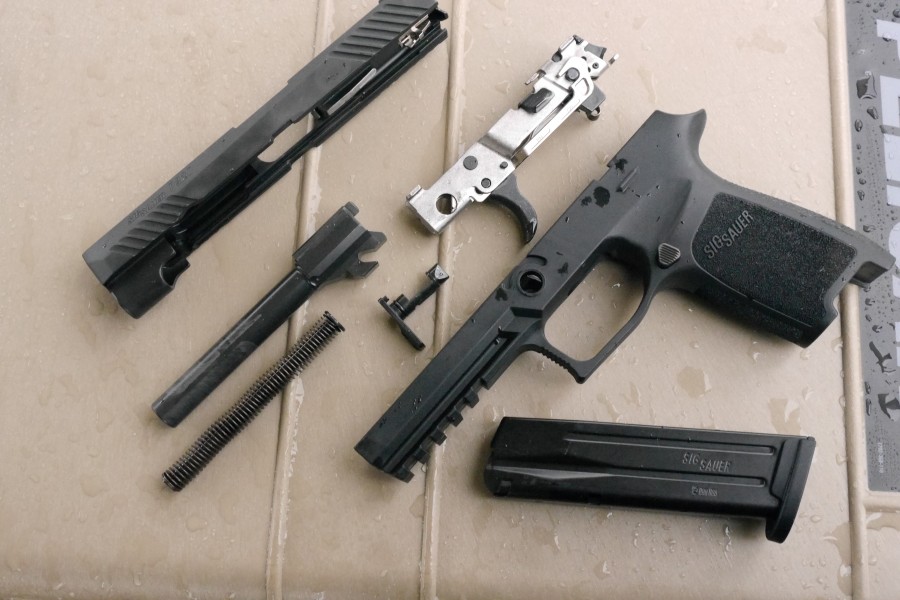
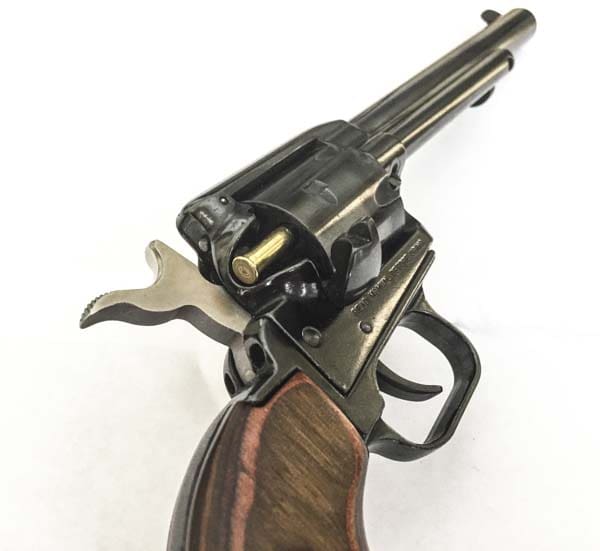
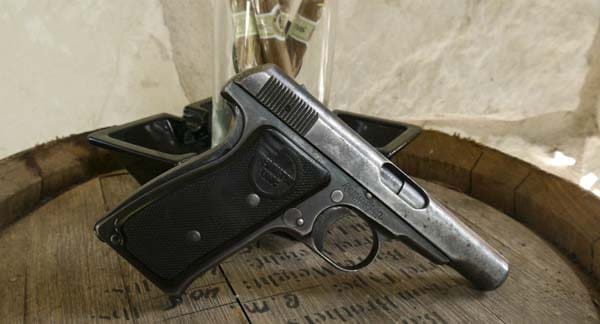
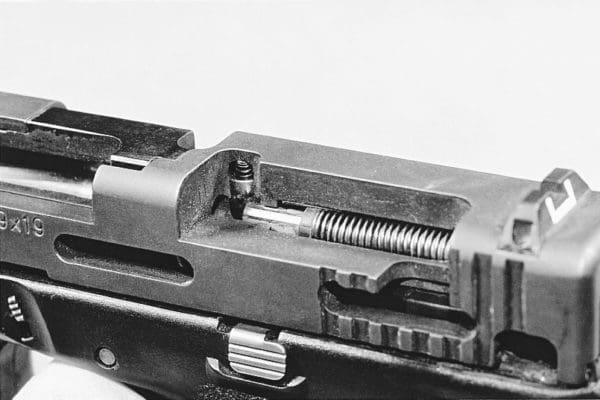


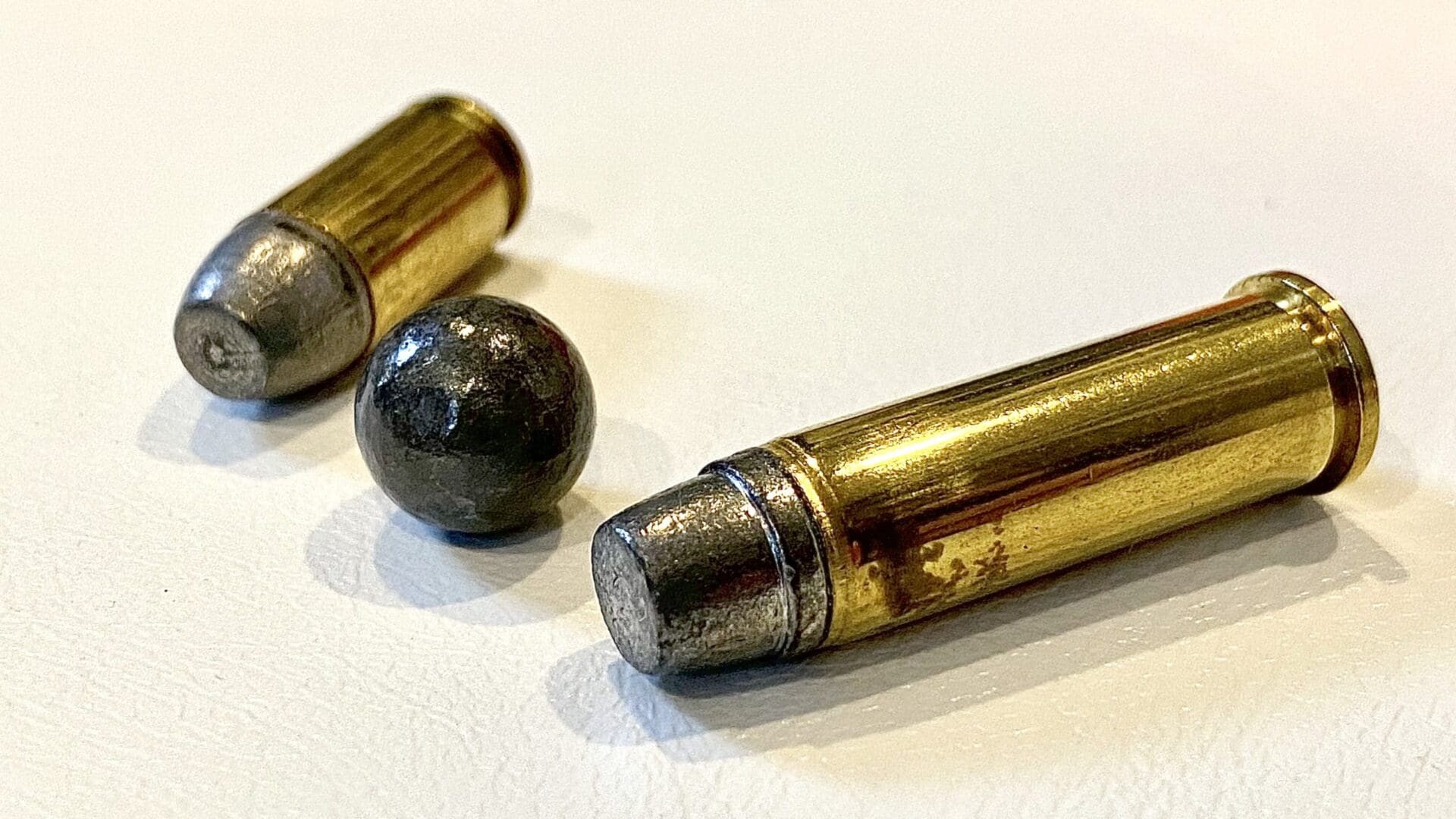
I have dropped a couple of my firearms a few times. Cringed doesn’t adequately describe my alarm when it happens.
I don’t trust any gun, regardless of what the manufacturers claim. In my cases, I didn’t have an ND. Thank goodness!
In the late 1980s my dad’s 1911 fell out of his shoulder holster when he bent over inside a mini mart walk in cooler.
Luckily his ND only destroyed a bunch of soda cans.
That incident and Vietnam are why he’s damn near deaf today.
As one that has shot clays with 12 ga. autos for years, killed thousands of steel beverage cans with all sorts of guns, and even set off a 357magnum in the closed cab of a Ford F-100 – all without ear protection – I can attest that one shot from a 45 in a beer cooler will not make you deaf.
Feeding belts into a 30 cal machine gun for an hour without hearing protection – that is another story altogether.
I understand French rifles are perfectly drop safe.
Thats not fair. The French will fight to the death if you come between them and there white flag!
/sarcasm
Extensive testing confirms this rumor.
Funny, yes, very, but unfair.
The French soldiers were poorly led and equipped at the beginning of WW2. As a result, they suffered 360,000 dead or wounded during the Battle of France — in just six weeks.
The US military never suffered that many casualties in such a short period of time. But to see what might have been if the Americans were as poorly led as the French, look what happened at the Kasserine Pass.
After France fell, the reconstituted French Army grew to more than 1.3 million. It was the fourth largest Allied army in Europe behind the USSR, the US and England. And it fought well since the old generals had died or been kicked out.
And de Gaulle, who was certainly an asshole in many ways, fought well against superior German forces. He wasn’t senior enough to have commanded the French Army in, say, 1936, but if he was, the Battle of France may have had a different result. Gamelin and Weygand were superannuated fossils.
Yep. In many wars the French lost so many brave and great men. With all the manly genes annihilated, the remainder of the populace was left with effeminate wine sipping smiling eye winkers that want to take 6mo out of the year off. Thus we have the populace and generation of today in France.
Lets say something good about the French people. They gave us fries form France-we all love them. I like to dip them in BBQ sauce myself.
Indeed. I would further point out that the Blitzkrieg was a brand new tactic, and only made viable by the Third Reich’s high degree of mechanization. The US eventually beat them in terms of how mechanized we were, but at that time, there were the most mechanized military in the world BY FAR. Until that time, such a tactic was unheard of and would have been impossible, so no one had a good counter for it.
Additionally, the French resistance to Nazi occupation was one of the most vigorous of the war, to the point that they heavily inspired the civilians of other occupied nations to do the same. Those guys were TOUGH, and ballsy as hell. They blew up bridges, hijacked supplies, assassinated officers, and just generally harassed the Germans at every possible level of guerrilla warfare.
The only war that the French ever won was their own civil war.
You must be joking. The French had “guerilla” on paper, built up conveniently long after the 2nd World War ended. This is called propaganda.
Now for the facts.
The country no.1 with a working guerilla, or better say Home Army was the Balkan state that goes by the name Serbia or Yougoslavia. The Yougoslavs fought the devil out of the Benito-Italy and later out of Hitler-Germany.
The no.2 Home Army, or rather the full Underground State, with universities, intelligence service (gave a complete V2-rocket, captured from the Germans, to England) and substantial military force was Poland. No other country even comes close. In other words the “underground in any other country was a joke. In case of France it was a particularly dirty joke. French mademoiselles took to German soldiers in droves. In hundreds of thousands, to be precise.
The French, or shall I say the Hitler-Colaborators, were busy producing for the Wehrmacht and obeying German orders. The French were staying to attention at the mere drop of the German hat. Past war, the French men were only capable of one heroic “guerilla-deed” that was cutting hair and brutalizing the French women who preferred to have a child with one of the clean-shaven German guys because the French women abhorred, and rightly so, the filthy winos. Tens of thousend women were tortured by the “coraugeous” French Resistance after the war ended.
This is the only Piece de Resistance that was a full “success”. That way the French wife-beaters had their go, had their rapes, had their war spoils.
A very few French lost their lives in France DURING the war, indeed, but they were Stalinist Communists who wanted oppression and commie rule for France — not liberation and independence.
“Until 1944, Polish forces also outnumbered the French.” Check note a on Wikipedia’s “Polish contribution to World War II” page if you’re interested.
This comment system desperately needs a “Vote Up/Down” feature.
The half cock position on 19th century revolvers was not a “safety” at all. At half cock, the locking bar drops down, allowing the cylinder to be rotated for loading. Colt originally used small pins between each cylinder that would in theory hold the uncocked hammer in place, and prevent it from contacting a percussion cap. These pins are unfortunately rather flimsy and prone to being broken off. Remington had a better full slot to hold the hammer. All of those disappeared with the modern Smith & Wesson and Colt SAA series pistols. Instead, the practice was simply to load only five round; load one, skip one, load four more, cock and release, leaving the pistol uncocked on an empty cylinder. Leaving a pistol on a hot cylinder was not recommended since cowboys and soldiers were far more apt to drop their pistols, especially when riding. Now it is also true that the Colts had a “four click” cocking mechanism, the first click of which left the hammer just off the cartridge (a feature not present on the Italian clones), but I do not know if Colt considered this a safety. (The second click released the locking bar, the third is an intermediate click of no utility, and the fourth is full cock).
As an aside, California drop tests handguns from 14′ to a concrete slab.
As a second aside, Colt 1911s did not have a firing pin safety until the series 80 pistols. Some purists insist that only the Series 70 is “true” 1911. I am not sure what the argument is, as the Series 70s are not drop safe unless cocked and locked.
“Colt 1911s did not have a firing pin safety until the series 80 pistols.”
Which is why the Series 70 trigger is preferred over the Series 80.
The Swartz safety originated in the ’30s, on Colt 1911s.
With this safety, the grip safety moves the firing pin block, so there should be no discernable effect on trigger pull… in theory.
Yes, the Swartz safety was operated by the grip safety. The Series 80 mechanism is a firing pin block plunger initiated by the trigger press. It makes the trigger heavier, so most users prefer Series 70s, although the Series 80 trigger can be improved by a competent ‘smith.
The S80 trigger can be improved uuuuup to a point.
One of the best drop-in solutions to improve a Series 80 1911 is to get the Cylinder & Slide parts that activate the plunger. They’re TiN coated, and exhibit much less friction. You still get the “mushy” trigger pull as a result of pushing the firing pin block up and out of the path of the firing pin, but… that’s nigh on impossible to “fix” on the Series 80.
The California statute says 101 cm or 39.8 inches. See http://law.justia.com/codes/california/2016/code-pen/part-6/title-4/division-10/chapter-4/article-4/section-31900. Oddly enough, CA doesn’t drop the pistol on the rear of the slide unless there’s an exposed hammer or striker.
“Colts had a “four click” cocking mechanism…….. but I do not know if Colt considered this a safety. “****** That first click was the hammer catching the first sear, which could easily be broken off if the weapon was dropped. Stories are told of cowboys saddling their horse and after cinching the saddle, dropping the stirrup onto the hammer, shearing the sear and causing the gun to discharge.
So if a model is on the California approved list, we can take it that it has had additional drop testing beyond the ANSI test.
In CA they drop test all their politicians on their heads, to ensure they are certifiably bat shit crazy!
Drop safety compliance was required for certain imported firearms by the ’68 Gun Control Act.
And isn’t it refreshing that gun control was actually called gun control back then?
I’ve personally dropped a M&P40c 3 times ( learning how to choose the right holster is a steep learning curve, and use locktight people) in my knucklehead experience, the M&P is dropsafe.
I have the same pistol, and I’ve dropped it once.
It didn’t go boom, but all that proves is that it didn’t go boom when dropped in a certain way from a certain height.
All 3 of my screw ups were bathroom related, so waist height, call it 36″. Two were on concrete.
LASO uses some M&P .40, and the Highway Patrol will be going to them soon. The 1st generation, of course. Wouldn’t want to use the “latest” tech or the improved trigger of course.
Isn’t “drop safe” a tertiary or better form of safety anyway? If you aren’t in control of the firearm, you can’t fault it for not being in control of itself.
Feces Occurs, wear a helmet.
Or, if you are going to drink and drive, wear a condom.
Or, don’t run with a big sharp stick in your mouth?
Pretty sure all NEW Taurus guns are drop-safe NOW…keep up.
Are the shake-proof?
My guns are not safe from being dropped. My Five Seven twice came out of it’s holster when got out of my car with a heavy and bulky shoulder bag (my range bag not my purse). I have ordered a Spring Break shoulder holster for both the Five Seven and my .357 so that in addition to being more comfortable in a car they will (hopefully) drop less. The feeling of the gun coming out and falling was quite miserable.
See, nice. Thumbs high !
Short answer: “No.”
Longer answer: “It depends. If you drop a pistol that goes off when it hits the ground, you’ll likely wish you were wearing Depends.”
Kevlar Depends, with ceramic or steel plate inserts.
1. Buy a good holster.
2. Put unloaded gun into good holster.
3. Check for secure fit of gun in holster. If it doesn’t secure the gun it’s no good.
4. Move, jump, and shake.
5. If gun fall out of holster, it’s no good.
6. Only use good holsters. Every gun guy I know has holsters that don’t or didn’t work.
Holstered Glock 26, on an unfastened belt in an unfastened pair of pants, managed to pull the belt out of the pant loops and fall to my bathroom floor.
I was horrified. I mean, that floor tile cost me a pretty penny! Thankfully, it sustained the impact of that Austrian “brick” without visible damage.
Yep. Dodged a bullet there, by golly.
Glock popularity with striker fired engineering has always carried the “stigma” with it of no manual safety……”manual safeties”, whether they work or nor, engage the brain in a positive way…..Glock turned that on its proverbial head….as many years as i have carried a Glock, I carry Israeli style……just cant wrap my brain around “no manual safety”….yet would refuse to carry anything but my Glock………………just my $2 worth…..weird, isnt it ??!! 🙂
Sounds like BS. Of course we are talking about this because of the SIG P320.
In the video – it is really obvious that the SIG P320 discharges because of the movement of the trigger during the fall. The (inertial) mass of the trigger during impact causes the trigger (only at the specific angle) to fall the rear, discharging the gun. The force of this exceeds the force of the trigger spring resulting in the discharge. Had SIG designed the Trigger to have a center of mass at the trigger pin (instead of off center out on the trigger), this would not have occurred.
Alternatively, they could have had another mechanism blocking the trigger movement, such as a trigger safety (like a glock) or a grip safety (like HK or 1911).
I enjoyed this:
Don’t be fooled by the commenter who said that his hearing is fine. It’s vanishing, but he won’t know it until he gets a proper hearing test by a professional. Here is the reply I wrote to him:
What is your age?
The effects of each incident of excess noise usually appear many years later. That is the terrible trap that gets us.
One shot without hearing protection can cause permanent hearing damage. The problem is, most articles on the subject are superficial, and don’t really explain anything, so people don’t really understand the issue and ruin their hearing.
Here’s the gist of it: A too-loud noise blows down the hairs inside your inner ear until they look like tall grass that’s been blown down by a windstorm, and lie flat.
These hairs do not ever grow properly again. Then they keep growing back a tiny bit worse for the rest of your life.
I didn’t notice hearing loss for many years after my loud gunshot. Now, like millions of other American shooters, I’ve lost so much hearing, I’m just so screwed, and there isn’t a doctor on the planet who can fix me.
Well…. The good thing about your extensive deafness, is that now you don’t need to wear any hearing protection. You can just get out the belt fed machine guns and get blazing. No need to bother yourself with suppressors, silencers, whatever, ear plugs, or muffs. You are good to go now. Does it suck for all other activities in your life? Yeeeeeeeeeeeeeah… technically, but gun wise, you are good to go. You gotta think of the positive things man.
” You can just get out the belt fed machine guns and get blazing.”
Probably *not*, and here’s why:
The inner-ear sound sensitive hair cells may die, but the rest of the ear can sense pain just fine.
Remember the deaf guy Warren (I think it was his name), a number of months back who posted here about shooting with no ear-pro (thinking he didn’t need to, being deaf and all) and how *excruciating* it was for him?
Plenty of nerves that can sense pain are in your inner ear.
Hammer them hard, and they will let you know about it.
And as Dyspeptic mentioned a short while back, his tinnitus has made him hyper-sensitive to loud noises…
Not only do I suffer from tinnitus, but my wife is soft spoken, until she gets pissed off at me, usually because I can’t fully understands what she is saying. She shouts at me “Can’t you hear me” I say that I can hear her fine, but the words are “scrambled”.
I was in the Army in the 60s, when the best hearing protection was cigarette filters.
Now, tinnitus reigns. I haven’t suffered much actual hearing loss (effects vary among individuals), but the TV sound must be higher for me, and it’s harder for me to pick up voices in a noisy environment.
But I know several people with tinnitus who’ve never been around gunfire, or other loud noise that can remember, so it’s not all from just gunfire.
In my own case, I was too close to a 106 RR when it went off unexpectedly (not even the crew intended for it to fire). That was intense.
Speaking of “never try to catch a falling gun,” a friend of mine died because he tried to catch his gun as it slipped from his hands. He was on his way to his second deployment. Those personnel carrying sidearms were required to qualify on it. It was a freak accident as I was told. During training, while practicing strong hand/weak hand transition, his gun dropped/slipped from his grip. He tried to catch it when it fell. As the gun was falling, he ended up grabbing the trigger as it was facing him. He shot himself on the chest. Died on the spot. Medics were not fast enough to get to him to save him.
Ancient Chinese wisdom heard here recently:
“A dropped knife has no handle…”
The NAA mini revolvers have a notch in the cylinder as the safety. The hammer blade rests in it. Moving the barrel out of line with the cylinder. 100% drop safe. I always thought this would be good to have on a large caliber revolver.
I like the NAA design. My guess is they have a patent on it which is why you don’t see it anywhere else.
Most double action revolvers use some form of transfer bar or hammer block to make them drop safe.
“My guess is they have a patent on it which is why you don’t see it anywhere else.”
That gun has been around so long, I doubt it’s still under patent protection.
I mentioned the NAA mini hammer safety earlier tonight, but it looks like TTAG killed that entire thread, it was getting *loooong*…
I have some NAA revolvers. The notch between the cylinders is a great idea, as long as the hammer STAYS in the notch! On one of mine, you could rotate the cylinder with the hammer in the notch. I also noticed on occasion, when checking the little gun, that the hammer was sitting right on top of a live round. Scary shit man!
I loves these little guns, but you MUST check that the hammer sits in the notch, and that the cylinder will not move. I carry my magnum, in a holster, in my pocket 24/7.
Look at the Remington 1858 cap & ball revolver. This may be the system you are talking about.
The hammer is at rest in square notches between the nipples.
In commie kalifornia it’s truly not about “SAFETY”. It’s really about restricting firearm ownership. Just look at the safe for the serfs approve list. TYRANNY on a grand scale. Warning America, kalifornia is like an STD. Infectious and spreads.
Yeah, it’s spreading! I live in Oregon, and were getting a lot of crappy new bills up here. I think the two “Browns” one in Kommie Kal, and the other here in Oregon, must be related? Maybe brother and sister??
From what I read here, the only truly 100% safe handgun is a revolver equipped with a hammer block or transfer bar. Unless that long and heavy DAO trigger is pulled, nothing is going to come in contact with a primer. What is more, if the revolver is designed for personal defense, there is absolutely no reason not to have the hammer either shrouded or dehorned, thus making the weapon even more safe for everyday concealed carry. I understand that the DAO trigger is more difficult to master, but it can be done with practice. And the price of practice ammo, even a lot of it, is far more reasonable than the fees of a defense lawyer after an AD…..or of a funeral.
There is no such thing as safe anything. This is just a term that lawyers and politicians like to throw around. Safer is closer to the point. Sometimes shit happens. Malfunctions,Poor Design,Carelessness, or Just Bad Luck. Nothing in life is 100% Safe. Don’t expect it. Don’t plan on it. Sometimes your number just comes up. The best you can hope for is be aware and alert. Expecting safe can and will get you hurt or worse Dead.
No manual safety, no sale. Don’t want it leave it off. Safety on my pistol is off when in holster that covers the trigger. I can turn it on before removing the pistol from the holster for any reason other than defense. Never assume a firearm is “safe” in any case. Sometimes stuff just happens. More often than not with rifles and shotguns.
英国代写 jkkk
Comments are closed.